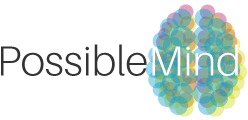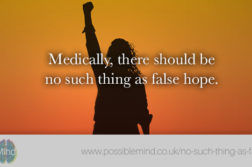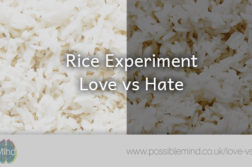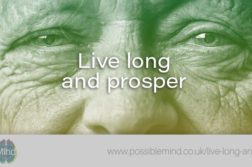It is that time of year once again when the best tennis players in the world come to the UK and compete at the Wimbledon Grand Slam Tournament. I love tennis but as much as I like the game, I love the mental and psychological side more and have been wondering how and what tennis can teach us about overcoming discomfort and illness.
Tennis is a very challenging game, both physically and mentally. But this post is, probably obviously, going to focus on the mental side of the game.
Covering the following points:
- Why is tennis so mentally challenging and how it applies to life.
- Techniques tennis players use to overcome the psychological challenges.
- How we can apply these techniques to overcome discomfort and illness.
To me, tennis is a great reflection of life and the difficulties we can sometimes face. This post is interested in how a player overcomes mental challenges and how it can be extremely helpful to us in our everyday life.
So let’s get started:
Why is tennis so mentally challenging and how it applies to life.
There are many reasons but the one I would like to highlight first is that a tennis player is out on the court on their own with no instruction from any of their coaches throughout the match. They must remember all they have learnt and apply it for themselves to have the best chance of achieving their goal. This may sound simple but when the match is not going your way that can be challenging.
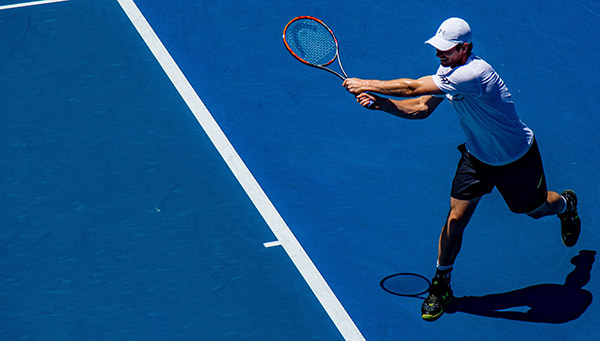
Being on your own applies to anyone in pain or is unwell, we can learn the techniques and what we need to do but, ultimately, it is our responsibility to take the relevant action to achieve comfort and health. It is nobody else’s job because they will not have as many benefits of winning, being in comfort or well as we will.
Next, is how the game of tennis is structured with rules, and in particular the scoring, that can make tennis a remarkably challenging sport.
For those of you who do not know how Tennis is scored, and are interested, let me try and explain with a very basic overview, if not please just skip this section:
A tennis match comprises or 4 elements: Points, Games, Sets and Match.
Points
Basically, a point is won when an opponent does not get the ball over the net, hits the ball outside the agreed lines of the court or does not hit the ball before the second bounce.
Basically points are scored like this:
0 = Love
1 = 15
2 = 30
3 = 40Games
This is where it gets mentally tougher for the players. A game must be won by two clear points.
A game is scored like this:
In a simple game, it will go like this:
- Player one 0 vs Player two 0
- Player one wins the point and the score is:
- Player one 1 vs Player two 0 ( in tennis this called 15-love )
- Player one wins the point and the score is:
- Player one 2 vs Player two 0 ( in tennis this called 30-love )
- Player one wins the point and the score is:
- Player one 3 vs Player two 0 ( in tennis this called 40-love )
Player one wins the point and the game. Player one was much better in that game and won it by the two clear point needed to win a game. The score is 1 game to Love (0 games) in the set.
The next game is much closer:
- Player one 0 vs Player two 0
- Player one wins the point and the score is:
- Player one 1 vs Player two 0 ( in tennis this is called 15-love )
- Player two wins the point and the score is:
- Player one 1 vs Player two 1 ( in tennis this is called 15-15 )
- Player one wins the point and the score is:
- Player one 2 vs Player two 1 ( in tennis this is called 30-15 )
- Player two wins the point and the score is:
- Player one 2 vs Player two 2 ( in tennis this is called 30-30 )
- Player one wins the point and the score is:
- Player one 3 vs Player two 2 ( in tennis this is called 40-30 )
- If player one won this point it would be game to player one because that player would have won by 2 clear points, however, Player two wins the point and the score is:
- Player one 3 vs Player two 3 ( in tennis this is called 40-40 known as Deuce )
- There cannot be a draw in tennis and a player has to win a game by two clear points. Player two wins this point.
- Player one – vs Player two Advantage
- Player two has the advantage which means if player two wins the next point player two wins the game. However that does not happen and Player one wins the point, which means the score goes back to:
- Player one 3 vs Player two 3 ( in tennis this is called 40-40 known as Deuce )
- There cannot be a draw in tennis and a player has to win a game by two clear points. Player one wins the point this time.
- Player one Advantage vs Player two –
- Player one has the advantage which means if player one wins the point player one wins the game because they have two clear points needed to win a game. If player two wins the point is back to 3-3 (40-40 Deuce) and they keep going until a player win by two clear points.
You will be pleased to know that Player one wins the point and the game. The score is now 2 game to Love (0 games) in the set.
What you may notice is that all the effort Player two put into the games comes to nothing. Tennis is very much a game of all or nothing.
If you think all that wasted effort for a game of tennis is bad this is replicated 10 fold for a set of tennis.
Sets
A standard set comprises of anywhere between 6 and 12 games. For example, a player can win a set 6-0 in which a player wins all the games in the set. Alternatively, a player can win 6 games and the other player can win either 1, 2, 3, 4 or 5 games. The player with 6 wins the whole set.
If the score is 6-6, you can not have a draw in Tennis, so it will go to a tiebreak so the set has a clear winner.
You can win 5 games of tennis and your opponent wins 6 games this means they win the whole set and you get nothing. All that effort for nothing. That requires real mental strength to accept.
Match
To win a match a player must win 2 of the 3 sets (5 sets, first to 3 sets, in Men’s grand slam matches).
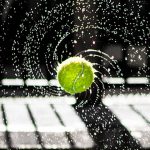 What you may have noted from the basic overview of the rules is that there are many variables involved in winning a game, set and match of tennis. And if you win, you take it all. But if you lose you walk away with nothing at every stage of the game.
What you may have noted from the basic overview of the rules is that there are many variables involved in winning a game, set and match of tennis. And if you win, you take it all. But if you lose you walk away with nothing at every stage of the game.
You win 2 points and your opponent wins 4 points – They get the whole game and are 1-0 up in the set. You walk away with nothing.
You win 4 games and your opponent wins 6 games – They get the whole set and are 1-0 up in the match. You walk away with nothing even though you won 4 games ( they counted for nothing).
This means a player can input a massive amount of effort to win a game or set of tennis and have absolutely nothing to show for it.
This reflects in life that we do not always get what we think we deserve for our effort. We will talk about what we can do to overcome this later in this post.
Tennis also requires a lot of decision-making skills along with an amazing ability to control your emotion when things change in a way you were not expecting. This links to our day to day life in general where we have lots of choices, thoughts and emotions that unfold before us.
Techniques tennis players use to overcome the psychological challenges.
There are many psychological methods tennis players use to overcome the mental challenges they face on the tennis court I feel that these techniques can be applied to helping overcome illness, injury and pain, more on that later. Let’s look at some techniques as suggested by Optimum Tennis:
- Controlling one’s thinking
- Managing the emotions
- Factors of The Game That Are Intangible
- Refining one’s focus
- Empty the Mind
- Improve Confidence
- Identify and Removing Poor Thought Patterns
- Getting in the zone
These 8 ideas are fundamental to helping win a tennis match but can also be applied to life, in general, to help become mentally resilient to whatever life throws at us. We know that tennis throws many mental challenges at the players in each match due to the unpredictability of the game and if we apply what tennis players have learnt we can deal with life in a much more proactive and positive way.
How we can apply these techniques to overcome discomfort and illness.
In this section, we will work through each of the eight points to see how we can apply them to our lives to become more comfortable, reduce suffering and develop the optimum mindset for recovery from injury and illness.
Controlling one’s thinking
This is a very interesting one to start off with because controlling our thinking sounds so very simple. Think of winning the match… Done. You are losing the game 2 sets to love and are losing your service games, which you ‘should’ and ‘normally’ win. Now think of winning the match. Not so easy, but it is still possible because the game is not over and whilst the game is still being played anything is possible.
Tennis Psychologists suggest the players keep their thoughts positive and this can be done by remaining aware of your thoughts while playing. The more aware the player is of his thoughts the more he can push them to develop a more positive thought pattern. Examples include: positive self-talk prior to game point, pumping themselves up after winning a big point or simply fueling the mind with positive emotions and keeping an enthusiastic mentality during the tennis match.
Source: Optimum Tennis
The whole process of keeping thoughts positive would help tremendously by a process called de-catastrophizing which means seeing the most positive outcome still available to us, rather than the worst possible outcome which we can sometimes do when our match, health or comfort isn’t the way we would like it to be. Just think what is possible not what you think the chances are of it happening.
The Key To Happiness Is Letting Each Situation Be What It Is Instead Of What You Think It Should Be.
Whilst we are letting it be we are open to the possibility of the best outcome for us and in this zone we can focus solely on the next point.
Another key in the Optimum Tennis statement above is awareness. If we can be aware of our thoughts we can choose how to respond to them.
A thought is harmless unless we believe it. It’s not our thoughts, but our attachment to our thoughts, that causes suffering.
Byron Katie
‘Responding‘ is different to ‘Reacting‘ in that we are aware and choose the best response to a certain situation, rather than having a knee-jerk ( habitual ) reaction. By developing a pause and response as our habit (like a Zen Masters Practice) we can always select the best possible behaviour.
Because you are alive, everything is possible.
Thich Nhat Hanh
This quote is so powerful because it continues to give us hope. We may be losing the game 2 set to love and a service game down and start thinking that the game is over. But winning the match is still possible, others have done it before and all we need to do is focus on winning this point and then the next and so on. The odds and chances of winning the match are not important, what is important is that it is possible to win the match.
This links to life when a doctor gives a diagnosis of Cancer and says you have so many months to live. At best the doctor is guessing because there are too many variables, like mental strength, belief, drive, determination, support structure and more, for the doctor to give that prognosis. As the quote goes:
Accept the diagnosis, not the prognosis
The odds and chances of recovery/healing are not important, what is important is that it is possible to heal because people have before, and if not it is still possible.
A beautiful Tao story which helps sum up this how section and demonstrates de-catostrophizing, acceptance and not trying to judge if something is good or bad is about a farmer:
There was a farmer whose horse ran away. That evening the neighbors gathered to commiserate with him since this was such bad luck. He said, “May be.” The next day the horse returned, but brought with it six wild horses, and the neighbors came exclaiming at his good fortune. He said, “May be.” And then, the following day, his son tried to saddle and ride one of the wild horses, was thrown, and broke his leg.
Again the neighbors came to offer their sympathy for the misfortune. He said, “May be.” The day after that, conscription officers came to the village to seize young men for the army, but because of the broken leg the farmer’s son was rejected. When the neighbors came in to say how fortunately everything had turned out, he said, “May be.”
Source: Tao: The Watercourse Way, by Alan Watts
One statement you hear sports stars say a lot now is “it is what it is” and depending on who tells the above story sometimes it is told with ‘Maybe’, other times with ‘it is what it is’. I prefer ‘it is what it is’ because it has that element of accepting the situation which gives the foundation build upon.
Managing the emotions
Tennis psychology suggests that a player should keep a balanced level of arousal throughout his game.
Source: Optimum Tennis
The Synthesis Center helps us discover our true self and how we can maintain that balance with the following mantras:
I have a mind but am not my thoughts because they are forever changing.
I have emotions but am not my feelings because they are forever changing.
I have a body but am not my sensations because they are forever changing.
So the question is who I am. According to The Synthesis Center, the answer is:
I am the constant conscious awareness of the everchanging thoughts, feelings, sensations and body.
This awareness is who we are from the day we are born until the day we die and is a constant, unlike the ever changing mind, emotions and body. We are the observer and can choose how we respond to our sensations, feelings and thoughts.
From this point of awareness, we can accept the feeling and thoughts and sensations in this moment.
To keep the balance we can observe and most importantly feel the emotion and then move on by choosing how to respond.
A feeling has one purpose, and that is to be felt. Once felt there is nothing left.
With this is mind we can know that any good, bad or indifferent thoughts, feeling or sensations will never last.
This too shall pass
Because everything changes this saying is true in every event and helps us to feel without too much intensity, thus enabling us to get back on our focus of winning each point, changing the sensation or healing.
Factors of The Game That Are Intangible
Once on the court, many factors can arise that affect a player’s game but are out of his control. Examples of this would include: a player can’t control the abilities of his opponent or the weather or court conditions. He can’t control the supporters; however, the thing a player can control is how much attention he gives to these factors.
Source: Optimum Tennis
Timothy Miller in his book How to want what you have stated that there are always two choices in every situation. Accept it or change it. If you can’t change it you have to accept it. If you do neither you will suffer.
The wisdom to not suffer comes from Byron Katie who implies that suffering is wanting reality to be different from how it is. Thus making acceptance of the current situation key to tennis, life and recovery. With acceptance we have a foundation with which we can build our future, else we are stuck in an argument with reality which is painful and we will alway lose.
By accepting, we can, once again, choose the best action to move forward, which as alway is to win the next point and the one after that.
In life accepting that we are unwell means that we have a solid foundation to build new behaviours that give us the best chance of recovery and healing.
With pain and discomfort, we can know that ‘this too shall pass’ and not last for ever. If we stay aware we can see how the intensity change from moment to moment.
Refining one’s focus
Tennis psychology teaches the players to keep their mind concentrated on the game throughout. At the beginning of any match, each player’s focus is the game but with time and uncontrollable factors, like time pressure or external pressure or the environment, they become less focused.
Source: Optimum Tennis
In tennis focusing on winning each point is the key to winning the whole match. If solely putting your energy and concentration on winning the point means you give yourself the best opportunity to win the match then the following statement must be true:
Focus on winning the point and only the point. The Games, Sets and Match will take care of itself.
I saw an extraordinary example of this at the 2017 French open when a female player did not even realise she had won the whole match because she was so focused on winning each point.
This sounds so simple, doesn’t it? Just focus on winning the point, however, when things don’t go your way and you are losing or the umpire makes a decision that goes against you and feels unfair. It is much harder to remember that golden rule.
The challenge then is to re-establish our focus on the goal of winning the next point.
The best way to do this is having a mantra and repeat it over and over to make it a belief. Do this before the match so that it becomes a strong belief. When you need call on the mantra in the match it will help you become aware and accept that you have moved away from the golden rule. Without the awareness and acceptance, you can never make the choice to re-focus.
Mark Manson summed this up nicely with the following quote:
Emotionals are not choice, behaviour is.
He goes on to say:
As soon as you try to eliminate a thought or emotion it gets stronger.
Not resisting anything – Feel the feeling and think the thought fully. Once fully felt and thought there is nothing left. It is important to note feeling an emotion is very different from expressing or venting a feeling.
Non-resistance, acceptance, awareness and the understanding that winning is always possible until the match point is lost gives us a platform to work from.
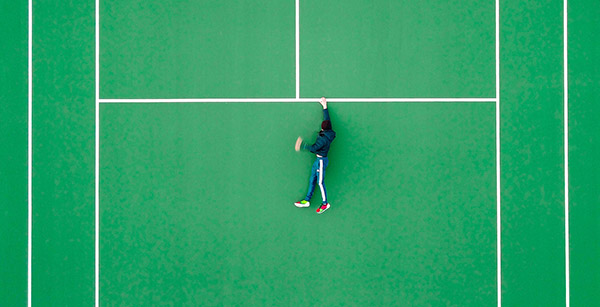
This applies to life, illness and pain with the golden rule of ‘This too shall pass’ knowing that everything changes. So life, illness and pain will never last forever.
Because change is the only certainty, it confirms that from each moment in life, everything is possible including recovery, comfort and healing. There are infinite possibilities in each moment and all we need to do is choose the behaviour that is most likely to result in us being more comfortable and more healthy.
Empty the Mind
A player’s imagination is one of the most useful tools he has, as visualizing his action helps him choose better techniques to tackle his opponent. With practice, tennis players know pretty much every consequence of their different hits. So by focusing their minds, they can actually visualize the events of the game and react better to the opponent’s moves.
Source: Optimum Tennis
Visualisation and imagination are extremely important in achieving our goals. Most sports stars use visualisation because it has been proven time and time again that the brain can not tell the difference between what is imagined and that which is real. MRI scans show the same part of the brain lighting up regardless if an event is imagined of takes place for real.
In sports, it helps take the nerves away and instructs the body what it would like it to achieve when the real event arrives.
Instructing the body is key to recovery and comfort and there are many examples how visualisation can help heal the body in my book, an extraordinary example of how we can heal with visualisation was shared in a BBC documentary:
Heart and the Canoe
A patient with blocked arteries, after every other option was tried, was told by his doctor to visualise. For 20 minutes each day the patient imagined he was paddling through his arteries scraping and clearing any blockages. After a couple of months the x-rays showed his arteries were much clearer, and he was no longer needing his wheelchair.
The next key to emptying the mind is to have no expectations. This may sound like a contradiction because when we believe and visualise we must have a purpose and expectation, right?
Not necessarily.
Research shows that the best, and most effective, visualisations are not those where we visualise to win but we visualise doing the actions we need to win, thus helping the required actions become second nature to us.
Having no expectations frees us to be non-resistant to whatever happens in the match, life, illness or discomfort. By not resisting we do not suffer when the result is not going ‘our’ way, we can go back to emptying our mind and focusing solely on winning the point, healing or becoming more comfortable.
A Zen monk by the name of Shinzen Young shared a remarkable formula of how non-resistance works:
Simply put it states that suffering is equal to Pain times Resistance ( S=PxR ). It also helps prove Haruki Murakami quote that suffering is indeed optional. To suffer we need to 2 things; Pain and Resistance. As the quote so nicely shares ‘Pain is inevitable’ but suffering and as we are about to find out resistance is indeed optional.
So lets say we don’t resist the pain and just accept the discomfort, meaning the resistance is low or even at zero. What would our amount of suffering be? According to The Pain Equation zero as well. Even if the pain is 100 the suffering will be zero, leaving us with just the sensation of discomfort to deal with. There are many mind body and medical techniques we can use to deal with just the pain and discomfort.
This basically means accepting the situation exactly how it is because if it was meant to be different it would be. This non-resistance and acceptance enables a free mind to focus solely on the task at hand of winning the next point, getting well or overcoming the pain.
Improve Confidence
Confidence is a big part of a strong mental tennis game. Players that are considered to have mental toughness are those that execute well under pressure and appear to have confidence (even if they feel terrible) Remaining calm and confident when facing a challenge is a simple and effective tool that tennis psychology teaches to tennis players.
Source: Optimum Tennis
Confidence is about belief as Henry Ford so cleverly put it:
Whether you think you can or whether you think you can’t, you’re right.
We have to believe in something and we can choose, so we just as well believe in winning, recovery, healing and being comfortable.
Taking responsibility to select the best action to make those beliefs come true instils confidence in us.
Our brains work on repetition. If we repeat a statement, action or thought often enough our brain recognises this as being important and engages us in making it happen for real. Remember, anything is possible we just have to choose the right actions but it most definitely is possible. So repeating a mantra over and over until it becomes a belief is a great way to increase confidence. Some examples are:
- I am happy, healthy and fit.
- I am good at tennis and do my best to win each and every point.
- I chose behaviours that give me the best chance of recovery.
- I am free from suffering
- I live in the moment and never try to guess the future.
It doesn’t matter if you feel they are not true to you at this moment. Just keep repeating them over and over and you will find you develop this belief and start choosing the behaviours that will give you the best chance to make it happen.
Identify and Removing Poor Thought Patterns
One can create miracles if one has a belief in their talent. Faith in one’s abilities is most vital for success in any endeavor. Limiting beliefs are one’s lack of this faith. It’s a complicated characteristic of the human psyche. It’s a weird way in which the human brain itself sabotages the player’s success.
Source: Optimum Tennis
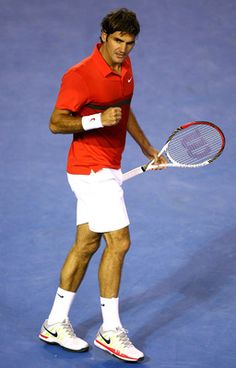 Tennis players are very good at programming themselves to repeat good behaviours and stop unhelpful actions. The most popular is the fist pump which is a clenched fist movement pulled toward to the body and can be used to lock in the memory of a good shot. Another which I don’t see as much is the flick away which is just a flick of the arm, wrist and hand in an away motion for mistakes, this demonstrates that it has happened but as a player, I am moving on from it and not carrying that action or shot with me through the rest of the match.
Tennis players are very good at programming themselves to repeat good behaviours and stop unhelpful actions. The most popular is the fist pump which is a clenched fist movement pulled toward to the body and can be used to lock in the memory of a good shot. Another which I don’t see as much is the flick away which is just a flick of the arm, wrist and hand in an away motion for mistakes, this demonstrates that it has happened but as a player, I am moving on from it and not carrying that action or shot with me through the rest of the match.
In healing and especially pain management we can do something very similar which is called anchoring. I have used this with a client, with great results. Usually under hypnosis, though it does not always have to be (like in the tennis fist pump), whilst in the desired state usually relaxed and comfortable we set an anchor which is linked to the feeling of comfort and ease. This anchor is usually the squeeze of the forefinger and thumb. Each and every time the forefinger and thumb are pressed it induces that comfort and relaxed feeling. This can be called whenever the person is in discomfort.
Getting in the zone
The “zone” is a feeling of both immense focus and concentration where the mind is focused solely on hitting the tennis ball. Players that find themselves in the zone often usually are the best.
Source: Optimum Tennis
These are the moment where time just goes by without us realising.
To me, the zone means being solely in the moment, not thinking about the past or the future. We cannot control the past and the only way we can control the future is by what we do now, in this moment.
Tennis isn’t about trying to predict the future it is solely about winning the next point
So this comes back, as we have said time and time again through this post, to accepting exactly where you are in the game and not thinking of winning the match because that is the future and not worrying about the last point, game or set because we can not control that. The key to getting in the zone is to concentrate solely on the now of winning the point at hand.
Conclusion
This by no means an exhaustive list of mental techniques, but I hope it gives you an idea how acceptance, awareness, being in the moment and keeping hope alive will mentally enable us to give us the best chance of winning, recovering or being comfortable because anything is possible.
